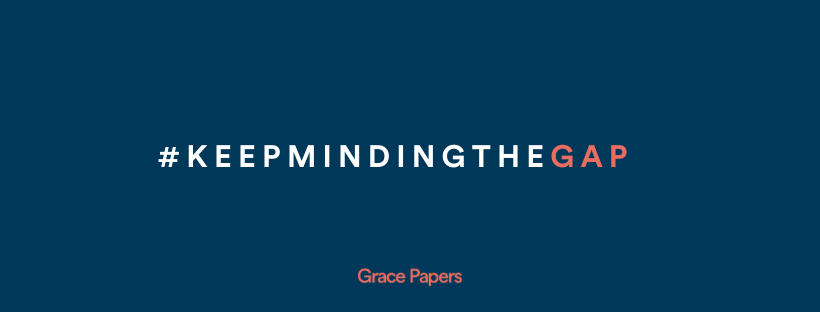“I do very little negotiation with people. And they do little with me, in terms of it … if I was a woman and I thought I was getting paid considerably less than somebody else that was equal coming in, that would bother me a lot. I probably wouldn’t even want to work there. I mean, [if] somebody’s gonna be unfair with you, in salary, they’re probably being unfair with you in a hundred other ways. I mean who should you spend your time with?”
Warren Buffet
‘People should just be grateful to have a job,’ is the phrase I repeatedly hear when I’ve raised this issue in the past couple of months. Respectfully, I disagree, and believe this type of thinking can further exaggerate gender inequality at work and home, so today, equal pay day, is another reminder to #KeepMindingTheGap.
Equal Pay Day marks the additional 59 days women have to work to earn, on average, the same amount as men for the previous financial year. The national gender pay gap currently sits at 14 percent with women earning $253.60 less than men each week. Women’s average full-time weekly salary sits at $1558.40 while men earn $1812.00.
As women are being disproportionately impacted by the pandemic, it is more important than ever to stay aware of the statistics and gendered pressures that impact women and men’s lives in discreet ways. There are many quiet contributors to the national gender pay gap that change our paths for no reason other than our gender, including the motherhood penalty.
Recently, Libby Lyons, the director of the Australian Government’s Workplace Gender Equality Agency, Meggie Palmer Founder of Peptalkher and AFLW Champion joined Grace Papers a special Live Coaching session on the gender pay gap. Lyons discussed why the national gender pay gap is a symbol for gender inequality, what contributes to it, and the difference between the ‘gender pay gap’ and ‘equal pay’ – which are often misinterpreted as the same thing when they are starkly different.
They advocated for greater understanding as to why the gender pay gap and shared with us their thoughts on what workplaces and individuals can do to mitigate against it.
Meggie tells us that knowing your value is critical. That’s why she created the @Peptalkher app – to keep a record of all your wins throughout the year. She also advocates for us all to know our three Ws when negotiating pay:
1. your WISH figure (the most outrageous number you can think of without laughing),
2. your WANT figure (appropriate and fair), and
3. your WALK figure (if you keep asking and never get this figure, you need re-evaluate whether or not your are being valued at the level of your experience).
Darcy advocated about the impact of sponsorship: someone who can advocate on your behalf, who can effectively use their chips to help you get ahead.
The five notable causes of the Gender Pay Gap
1. Equal pay: Despite equal pay being a legal requirement for all organisations, men and women are still sometimes paid different salaries for doing the same job. This is one contributor and, yes, this is illegal.
2. Discrimination and bias: Discrimination and bias are commonplace occurrences, and often play out when managers make decisions around hiring, pay, and promotions.
3. Female-dominated industries are paid less: Women and men also work in different occupations and industries. As there has been an historic undervaluing of women’s work, which remains systemic today, female dominated jobs often attract lower wages. When women work in male-dominated fields they face other barriers such as discrimination and bias.
4. Women take on the ‘lion’s share’ of unpaid care and domestic work: Lyons pointed out that for every hour of unpaid work a man does, a woman does one hour and 46 minutes. Societal expectations and gendered stereotypes often box women and men into the roles of ‘breadwinner’ and ‘carer’. With paid parental leave more difficult for men to obtain, women often spend more time out of the workforce and are more likely to return to work part-time.
5. Men dominate leadership roles: In Australia, women only hold 30 percent of key management positions and 17.1 percent of CEO roles. When women take more time out of the workforce, this slows their career progression and it takes longer to reach a leadership position. A lack of flexible work for senior leaders also makes it difficult for women to obtain and keep these leadership roles. In addition, there is also unconscious and conscious bias toward female leadership. When senior roles pay highest, it makes sense that the imbalance at the top is a key contributor to the gender pay gap.
The impact of the Gender Pay Gap
The gender pay gap is not just a number, but an important symbol representing the inequality that still exists between men and women in workplaces. “It impacts us from the moment we start work, and it stays with us until retirement,” said Lyons. Women are, on average, more likely to spend their lives balancing work and caring responsibilities. Their careers will usually progress slower than men’s as they take more time out of the workforce. They are more likely to return to work in part-time roles, and earn less money along the way. “There is a huge gender pay gap in superannuation, and at the moment women have on average 30 percent less superannuation than men when they retire,” said Lyons.
Australian workplaces must play an active role in mitigating these issues, and the business case for them to do so is strong. According to WGEA data, There is a strong correlation between progress in closing the gender gap and economic competitiveness, national productivity, innovation, economic growth, and ability of companies to attract and retain talent.
4 ways that workplaces can actively close the gender pay gap
-
Know your numbers – and then look beyond the number to understand what underpins your own Gender Pay Gap. Ensure, as a starting point, you have equal pay at the same job levels. Then look further – often gender pay gaps are caused by gender disparity at different levels in the organisation. Pay most attention to your roles that attract the largest allowances and the largest bonuses, and set gender targets and come up with strategies for change. Make sure you’re including your part-time employees in the data.
-
See yourself as part of the solution – a nd lead from the top. The more leaders who understand the business case, and talk about it in the same breath as other business targets, the greater the change.
-
Look at your recruitment and pay processes: Challenge meritocratic thinking and instead ask how can you actively use these processes to close your pay gap. Consider putting aside a % of your annual salary increase budget to close the gap; if your gap starts at recruitment, actively manage starting salaries; if it’s exacerbated by your pay and promotion processes, scrutinize those with a gender lens.
-
Understand how systemic bias could be contributing, and ensure proper checks and balances in your processes. Pay gaps are often an outcome of accumulated merit-based decisions, and can be a good indicator of where unconscious bias is at play.
Remember, this is not a day of celebration, nor a women’s issue – it is a day to commit to action on a human rights issue that impacts us all.




